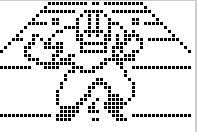Regular visitors here at the Junkyard will no doubt be aware of my affection for Nintendo's latest hardware release. While I was skeptical initially, since purchasing a Switch I have fallen in love with the system and I rarely go anywhere without it. With this in mind, whenever a game is released that has even the most tenuous link to the Dreamcast, I sit up and pay attention. Most recently both Gunbird and Volgarr the Viking have peaked my interest, and while the former isn't actually a port of a Dreamcast game (although I'm willing to bet the sequel will be along sometime soon); and the latter was only ported to the Dreamcast posthumously, the very fact that games with a connection to Sega's final system are being released on Nintendo's current warms my cockles no end. You could cook an egg on my cockles, in fact.
 |
| Pacific Rim or Zero Gunner 2? |
Following in the wake of the two aforementioned titles and the tsunami of Dreamcast/NEO-GEO ports, comes a re-release of Zero Gunner 2 - a paid-up member of the Dreamcast's celebrated stable of thoroughbred shmups. The Dreamcast's library of shmups is up there with the very best systems of yesteryear and there can be no doubt about that. The issue I have - and I'm sure many others will agree - is that the vast majority of the cream of the Dreamcast's shmup library was only released in Japan; and due to this numbers of available copies are limited. As a consequence, original copies of these games are incredibly hard to come by in the wild, and when they appear on eBay or other sites online, the prices they command are very often prohibitive to the average gamer.
 |
| Commuter reaction to train fare rises was justified |
Ikaruga, Karous, Under Defeat, Spirit of Speed 1937, Psyvariar, Trigger Heart Exelica, Giga Wing 2...the list goes on. And the one thing all of these titles have in common is that they are expensive as all hell when they come up for sale online. Quality varies across the board of course, but the the one constant is the high price. I can't convey the number of times I've sat staring at a genuine copy of Trigger Heart Exelica on eBay, ready to hit that 'buy it now' button, only to remember that I also have car tax, a loan shark or an electricity bill to pay...which brings us nicely to Zero Gunner 2. As with the other titles listed above, Zero Gunner 2 from Psikyo is another title you can pay an arm and a leg for if you are so inclined...but now you don't have to. That's because it has arrived on the Nintendo Switch, and we thought it would be interesting to look at the original Dreamcast version and also how this new Switch iteration measures up...














































